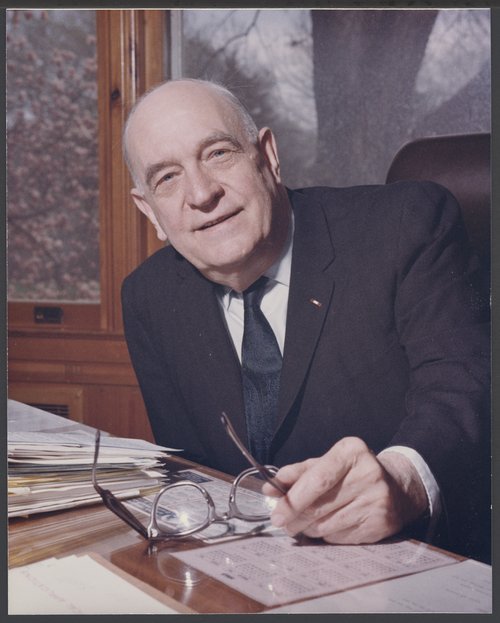Transforming Psychiatry One Patient at a Time: The Story of William C. Menninger
Thesis
The Family PracticeThe Hidden Wounds of World War IILegacy of HealingConclusion
Research
"Hate can only flourish where love is absent."
- William C. Menninger

William Menninger broke barriers across the field of psychiatry during his lifetime.
Source: Kansas Memory, 1965
William C. Menninger's reputation as a scholar along with his eagerness and charm, soon made him the face of psychiatry. With this wealth of experience, he began writing down his thoughts, turning those into books for the general public. These published pieces allowed all of his research to be shared with anyone who wanted to understand the ideas behind psychiatry.
After World War II, Menninger's passion was psychocoanalysis and its use to treat post-traumatic stress disorder and other illnesses. The aftermath of the war boosted the use of applied psychiatry and psychology but not without hardship.
"zeal[ous] psychiatrists promised more than they could deliver between 1940 and 1942. Psychiatrists had too quickly separated [men] from the service who could be of value." - William Menninger, Psychiatry in a Troubled World, 1948
William Menninger's portrait was on the cover of Time Magazine. He is said to be one of the most influential people in the world of psychiatry. The national recognition shows how influential Menninger was to the field of psychiatry. This portrait has a key alongside a brain, showing that he was unlocking complexities of the human mind.
Menninger broke barriers in the field of psychiatry, informing many people it in a way they can understand. He wrote in a way where he did not use jargon, but instead wrote in simple terms that allowed those who were not in the profession, to understand what psychiatry was truly about. He made the concepts of psychiatry easier for anyone to understand.
His legacy lives on when the Menninger Foundation moved locations to Houston, Texas in 2000 in affiliation with the Baylor College of Medicine.